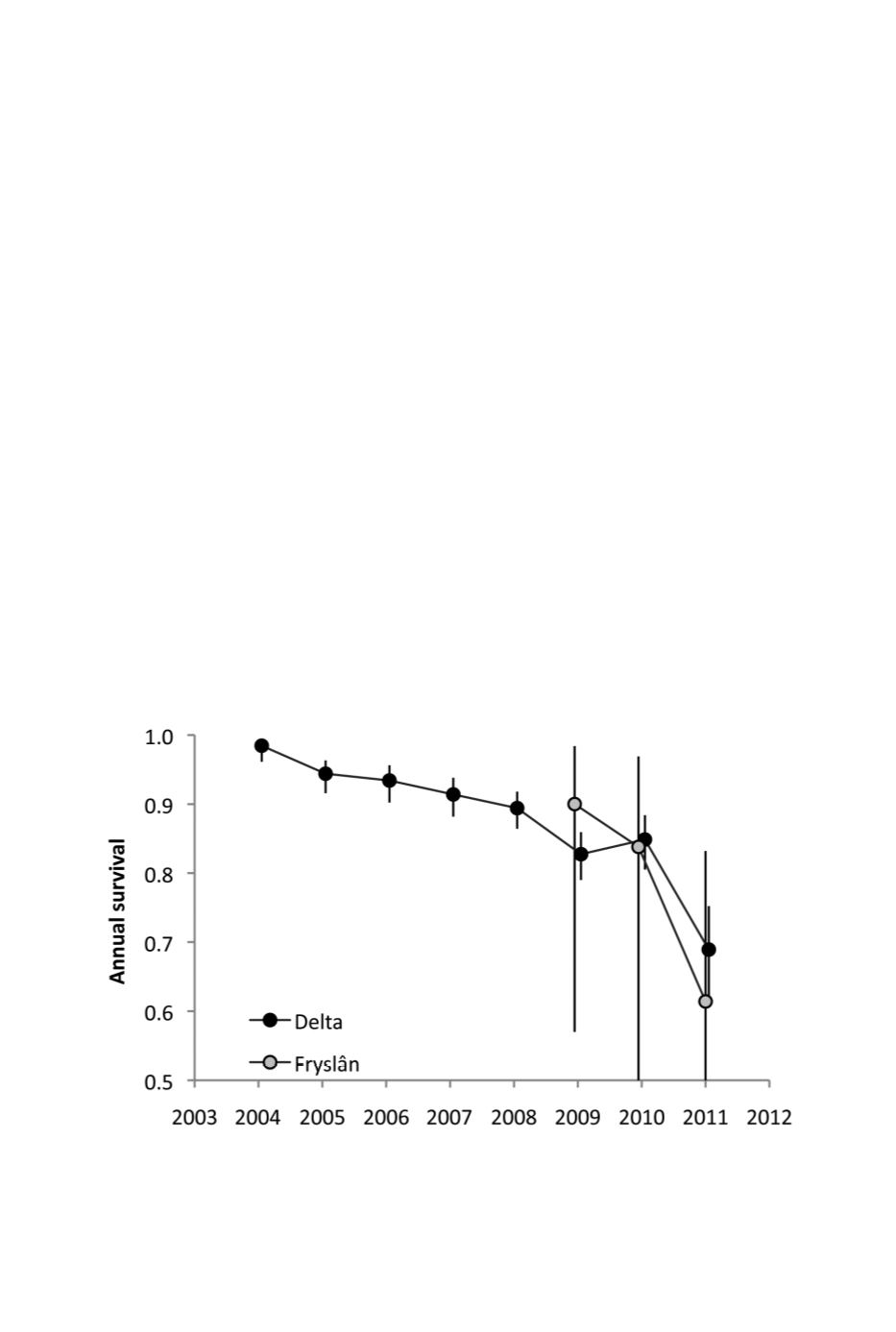
Survival and dispersal in a new Barnacle Goose population 79
©Wildfowl & Wetlands Trust
Wildfowl
(2013) 63: 72–89
rates (p) were also time-dependent and
differed between the two groups. The
reporting rate (r) for birds found dead
differed between groups, sexes and years,
whereas the fidelity parameter (F) could be
reduced to a single parameter (constant).
The AICc weight for the final model was
0.912 compared with an AICc weight of
0.088 for the next best model, in which
survival differed between years (as in the
best model), but additionally survival in the
first year of life differed from survival later
in life, as an adult (Table 2). The effect of
time (year) on survival is very significant; all
models without a time effect on S
performed poorly, with
Δ
AIC values of at
least 79.42 (Table 2).
Survival of Barnacle Geese in the Delta
area was initially very high, with 98%
surviving during the first year of the study.
Thereafter, annual survival rates gradually
declined, until they were < 80% in the year
to the mid-winter/spring of 2011 (Fig. 1,
Table 3). Buckland (1982) demonstrated
that in long-lived species you can expect a
trail-off in apparent survival, due to the
number of individuals not seen but still alive
during the latter stages of the study. The
high re-sightings rate for Barnacle Geese in
the Netherlands (92.3%
per annum
) meant
that most live birds were re-sighted and that
the drop in survival was likely to be real in
this case.
Survival in Fryslân
The survival analysis for birds ringed in the
breeding colony at Jan Durkspolder,
Fryslân, was based on re-sightings of live
birds only. There are, as yet, no reports of
shot birds from this group. In the best
Figure 1.
Annual survival of Barnacle Geese breeding in the Netherlands, for birds ringed in the Delta
area and in Fryslân. Vertical lines represent 95% confidence intervals. Values shown are from the best
models for both areas in Table 2.


